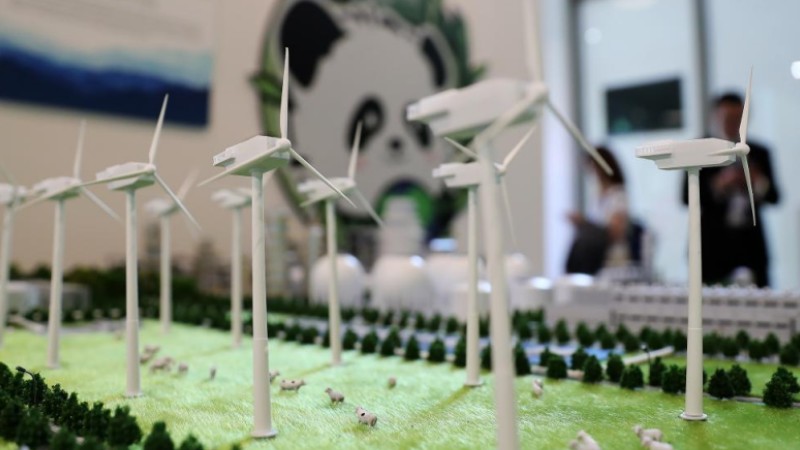Chinese plant scientists build vertical unmanned greenhouse rack
CHENGDU, Dec. 12 (Xinhua) -- Inside a building on the outskirts of Chengdu, the capital city of Sichuan Province, 16 robots are programmed to tend vegetables grown on 20-tier vertically-installed rack.
Standing beside the 10-meter-high unmanned greenhouse rack, the tallest of its kind in the world, the urban farm's chief scientist Yang Qichang boasted that a total of 24,000 vegetables had been planted in a floorage of 200 square meters.
The plant factory was built at the Chinese Academy of Agricultural Sciences' Institute of Urban Agriculture (IUA). Its cultivation procedures are completely automated, including sowing, thinning, harvesting and packaging.
In an open field, the lettuce usually takes about 70 days to grow from seed to harvest, but in this urban farm, the growth period can be shortened to about 35 days, resulting in 10 crops a year. Its annual output is expected to reach 50 tonnes.
Nutrition has not suffered as a result of rapid growth and high productivity. The crude protein content of alfalfa grown by crop breeding accelerators has reached 30 percent, about 10 percentage points higher than that of normal species.
The alfalfa can be harvested once every 12 days. Crop yield has increased by more than 20 times when compared to nature's maximum of four harvests per year.
"Crops grow fast and well, and its key secret lies in the fill light," said IUA's researcher Wang Sen, pointing at LED light above the vegetables. "We sought out an optimal 'light recipe' by adjusting the light source in different growth stages of the crops."
Over the last three years, the plant scientists have created over 1,300 customized light formulas for 72 crops including rice, wheat, and corn.
IUA scientists managed to harvest high-quality grapes with high yields thanks to the root-limiting cultivation and precise control of water and fertilizers, in order to create and grow more fruits and vegetables in limited urban residential space.
Artificial planting racks are typically installed to five floors due to safety risks, but the robotic system in a smart factory works to overcome this limitation, according to Wang.
"In densely populated cities, plant factories can replenish the city's daily vegetable supply and improve its self-sufficiency," said Wang.
In addition, the vertical greenhouse technology can also be applied in scenarios such as border patrol, scientific expedition and island survival.
Next, scientists will upgrade the smart factory by integrating aquaculture and edible fungi cultivation into the vertical space, as well as investigate new models of rooftop and balcony agriculture.
Photos
Related Stories
- Grain output rises despite disruptions
- China releases first pan-genome map of tea plant
- Chinese scientists discover genetic secret of iron-rich maize
- Chinese FM pledges enhanced educational, agricultural cooperation with Mali
- BRI agricultural cooperation help alleviate hunger in less developed countries: report
Copyright © 2023 People's Daily Online. All Rights Reserved.









